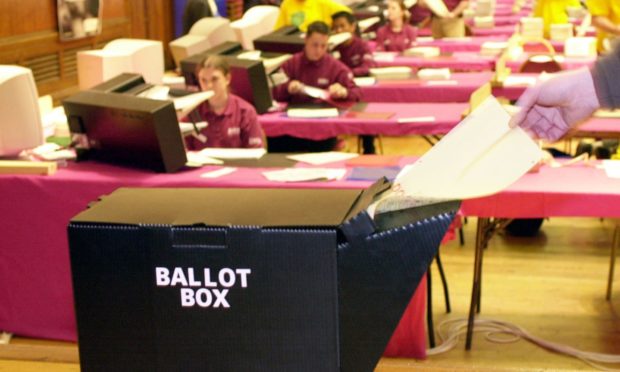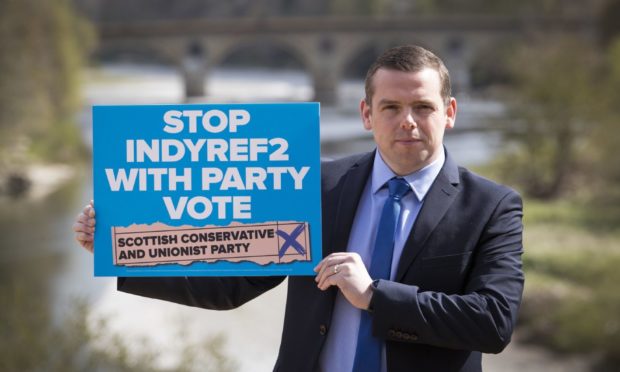Scotland’s mixed system of votes gives everyone two shots at shaping the Holyrood parliament but with the SNP dominating in the first-past-the-post contest, the 2021 Scottish election focused minds on a wider pool of candidates on the regional ballot paper.
This election saw a late push from Scottish Labour, a rally from the Lib Dems and a completely new campaign on the fringes of the constitutional debate.
It’s where former SNP leader Alex Salmond fought his campaign with Alba candidates for independence, and it’s where former Labour firebrand George Galloway pitched for a unionist vote.
The Greens have only ever had MSPs on the proportionately elected regional list, Tories have depended on it for years.
The SNP were forced into a campaign for both votes, fearful the party will be squeezed.
Altogether, it made this a tougher election to read.
‘Resigned to a meagre haul’
Dominic Hinde, an academic at Glasgow University and political commentator, said: “This campaign was about the battle for list votes as every party bar the SNP has resigned themselves to a meagre constituency haul.
“This means the Tories, Labour and Greens all going hard over just seven seats per region. What used to be referred to as top-up votes are now the main battleground.”
Holyrood has 129 seats, 73 of which are filled by traditional, winner-takes-all votes, like at Westminster.
Second votes are filled by parties across wider regions, such as the North East or Mid Scotland and Fife.
The results are based on the proportion of votes received for each party. It takes into account the number of candidates already elected across constituencies in that region to make it more proportional.
When Holyrood was established, in 1999, it was often said the hybrid system would prevent one party dominating.
Labour were the strongest force at the start, but the SNP have gone on to dominate the constituencies in recent elections, leaving smaller parties or independents with no chance.
Scotland’s eight regions send seven MSPs each to Holyrood, making it fertile ground for successful campaigns.
Bulwark against independence
From the start, Tories focused on the second vote – often referred to as the peach-coloured ballot – as their best bulwark against independence.
Tory leader Douglas Ross made repeated calls throughout the campaign, all but crowding out the constituency tussles.
On the eve of the election, he said: “Using your peach party list vote for the Scottish Conservatives is the tried and tested way to stop an SNP majority.
“It worked in 2016 and if voters unite to make the anti-referendum, pro-UK majority vote count, it will work again tomorrow.”
Mr Ross stood in the Highlands and Islands region, meaning he didn’t need to beat the SNP in his Moray constituency – he just needs enough of a Tory vote across a huge region to get into parliament. If the vote is big enough, more Tories will be added behind him.
Labour leader Anas Sarwar boarded a peach-coloured bus for the final stage of the campaign when it became clear this is where the real battle is.
“If you want the focus of the next parliament to be on our national recovery then you must vote for it with your second vote on the peach ballot paper.”
He added: “If you like what I have been saying and you agree that we need to focus on our national recovery, then you must use both your votes, particularly the second, peach vote, for Labour.”
Attitudes changed
Professor Michael Keating, chair in politics at Aberdeen University, said parties – particularly Labour – have changed their attitudes to the regional list over time.
“People understand the two-vote system but the intricacies of tactical voting are more difficult to get your head round,” he said.
“Leaflets have been convoluted for regional campaign messages. Tactical voting is more obvious to understand in the constituencies.
“The Greens do better because people understand that is where they stand. Labour does surprisingly badly there.”
But with such a focus on a complex formula for dividing votes in regions, is the system good enough to stay?
Labour members who arguably used to overlook the regional vote as a “top up” list now drive buses around the country promoting it.
Prof Keating added: “No one is suggesting it’s a two-tier system anymore.”


